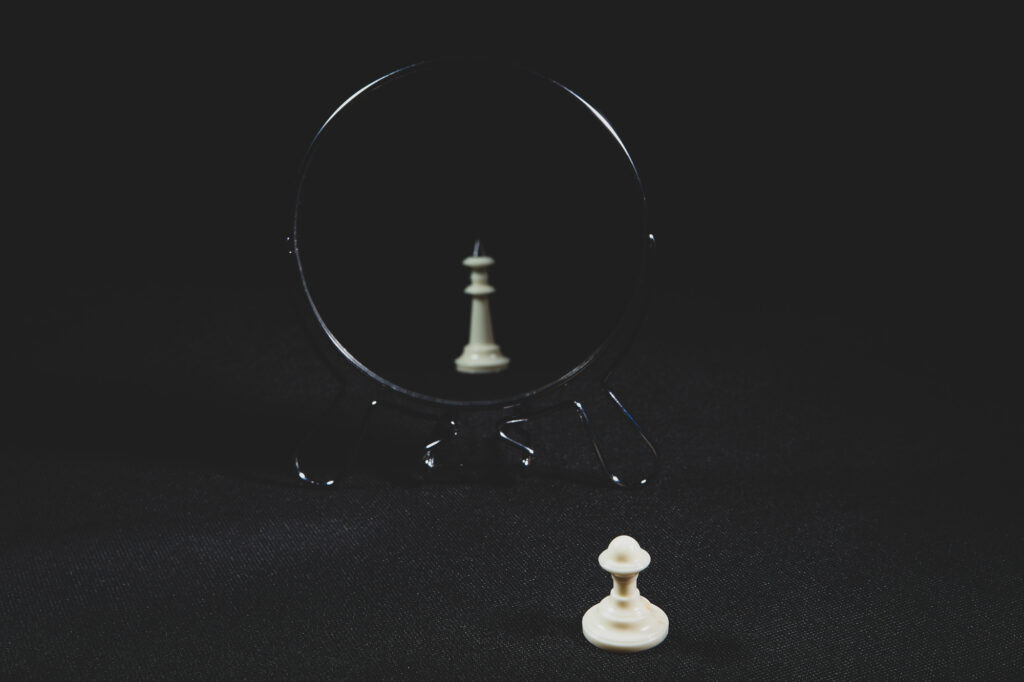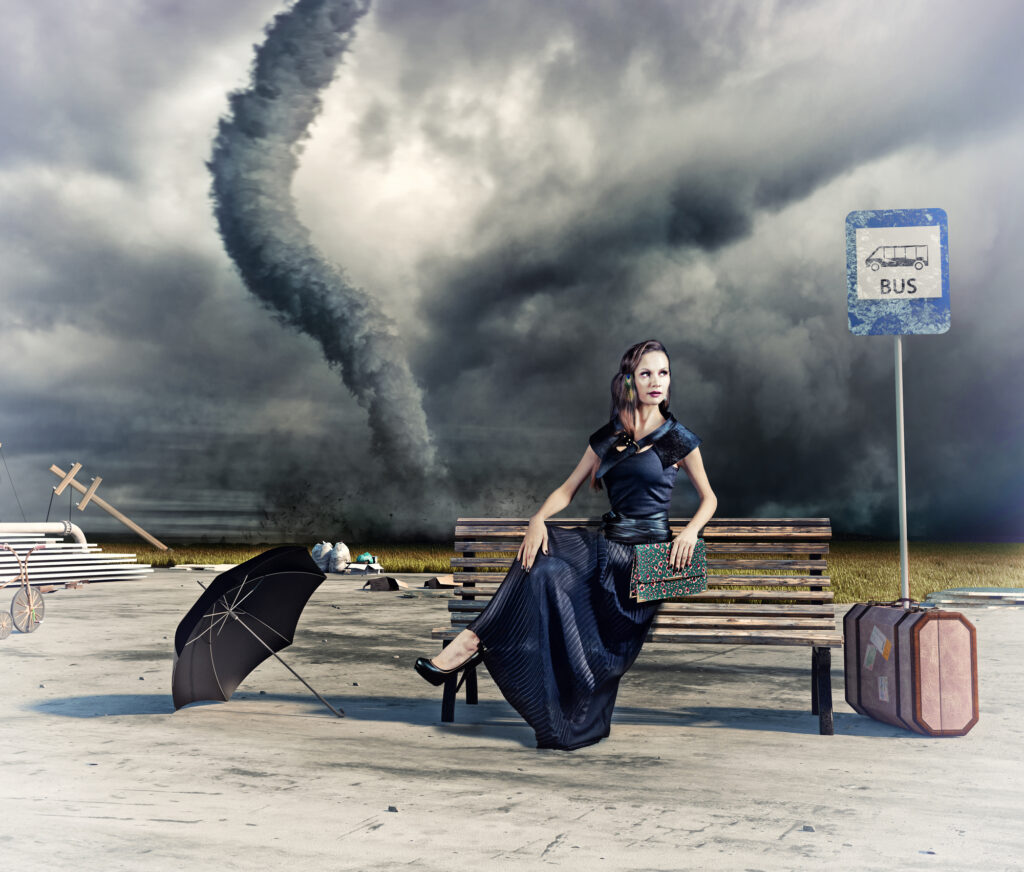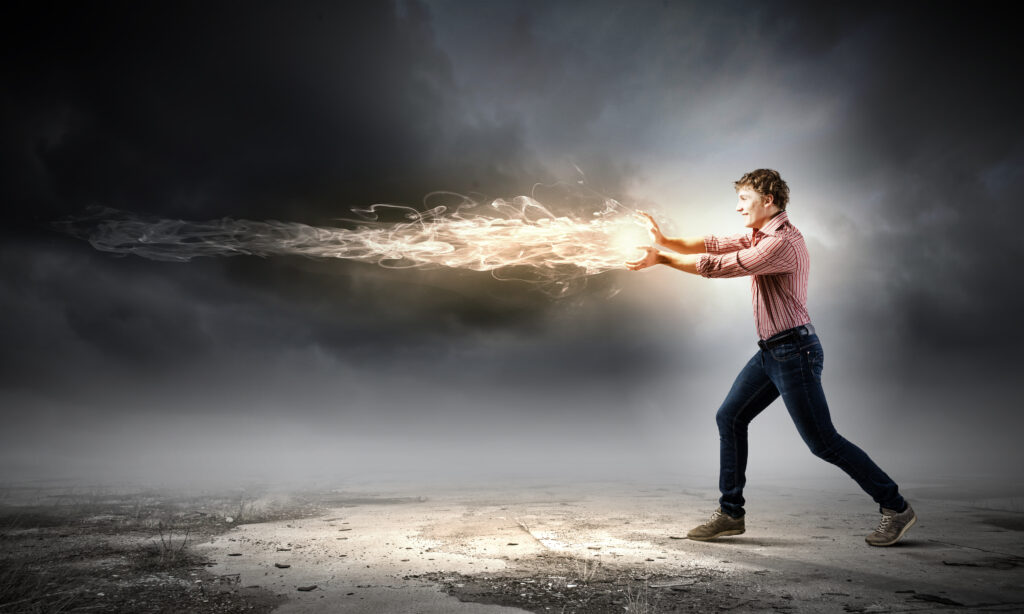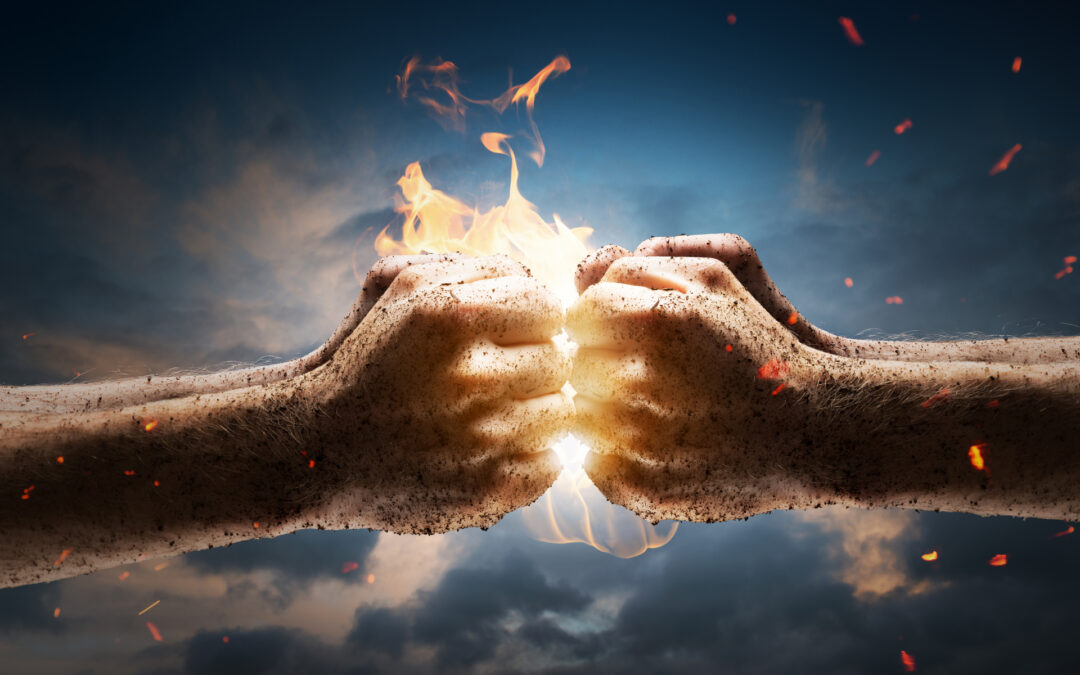Are you struggling to keep your readers engaged? Do you find that people give up before they get to the meaty stuff on page fifty-nine? If this sounds familiar, maybe your work lacks tension and conflict.
All great fiction needs both conflict and tension to drive the action — and it’s only when your protagonist battles against the obstacles you place in their way that your opening pages genuinely come to life.
This third (and final) part of Relay Publishing’s Understanding Conflict series will look at the sources of conflict — and how internal conflict can help us develop characters with flaws to overcome and internal battles to fight.
Let’s recap
It’s OK to jump into this series of articles at part 3, but reading the other two parts might be helpful because we cover some basics that might help your understanding for this final part.
In part one, we looked at:
- What is conflict? — the idea that conflict is born of clashing objectives.
- David Mamet’s theory that all stories can be defined as “Somebody wants something and has trouble getting it.”
- The Unity of Opposites — the idea that characters are LOCKED into combat, and how to escalate that tension to its full potential.
- The Five-Finger Pitch — a way of summarizing (or creating) a story with conflict at the heart of it.
- The Problem of the World — the conflict preventing the protagonist’s actualization at the beginning of the story.
In part two, we explored:
- How all great stories are about
- The character arc of the three-act structure.
- The Dramatic Question — a method of creating a closed, character-based question that drives the action of a chapter or scene (a tension essential).
- The nature of action.
In this part, we’re going to explore six significant ways to create conflict in your fiction, exploring:
- Protagonist vs. Self — where conflict comes from within.
- Protagonist vs. Antagonist — the most common form of conflict.
- Protagonist vs. Nature — where the planet’s forces become an uncontrollable obstacle.
- Protagonist vs. The Supernatural — where they face forces beyond the typical human experience.
- Protagonist vs. Technology — where they are in conflict with cold, hard logic.
- Protagonist vs. Society — where the forces of culture present obstacles to actualization.
Let’s take a look at each of these in more detail.
1. Protagonist vs. Self
“You’re your own worst enemy.” We’ve all heard it. And that’s essentially the conflict we’re exploring here — the choices (and changes) the character MUST make to overcome the Problem of the World.
In the first part of this series, we established that very little will happen in your story until you’ve understood what the protagonist WANTs. Because without an objective to pursue, your protagonist will likely remain in a world of inertia forever.
If a character wants something and they just get it, there’s no jeopardy or conflict. So, sometimes, it can be interesting to make the character question themselves —
- forcing them to make decisions that pose moral questions;
- challenging them to make the right choice that could obstruct the path of their objective.
Protagonist vs. Self could encompass mental health issues that lock them into the status quo at the story’s beginning. And in the three-act structure, we often see internal conflicts arise in the Falling Action of Act 2, where the protagonist has to overcome the emotional obstacles that threaten to defeat them.
Great books and movies that include Character vs. Self conflict are:
- Fight Club, by Chuck Palahnuik
- Hamlet, by William Shakespeare
- The Sixth Sense, by M. Night Shyamalan
- Emma, by Jane Austen
- The Handmaid’s Tale, by Margaret Atwood

2. Protagonist vs. Antagonist
This is the most common of all tension constructs — the protagonist (the main character) pushed to the limits by the antagonist (the baddy).
However, it’s not really fair to call all antagonists “baddies” because that’s a little simplistic — and antagonists take many subtle forms.
In the most accurate definition, an antagonist is the force of opposition. We must first know and understand what the protagonist wants (their objective) before we can understand the role of the antagonist.
An antagonist doesn’t always shoot laser beams out of their fingers; they could be your best friend.
John vs. cat
Say, for example, John wants to get to work on time but is running late.
So, he’s rushing around the house, and his cat keeps getting under his feet, slowing him down.
In this case, the cat is the antagonist. They might not harbor any ill will toward John, but they’re obstructing John’s attempts to achieve his objective.
John vs. Andy
Or perhaps John wants to buy that sports car he’s been lusting over.
But Andy, his best mate, is trying to convince him that buying a sports car when he’s got bills to pay is NOT a good idea.
Again, Andy is the antagonist in this case because he’s attempting to prevent John from achieving his objective.
But, in this case, Andy has good intentions — he’s trying to stop John from making a bad decision.
Protagonist vs. Antagonist
So, Protagonist vs. Antagonist can be more subtle than Flash Gordon vs. Ming the Merciless. Of course, the more powerful and determined you make your antagonist, the more you force your antagonist to rise to the challenge — and the greater the drama of the moment.
Great movies and books with Protagonist vs. Antagonist tensions:
- Luke Skywalker vs. Darth Vadar — Original Star Wars trilogy
- Dracula, by Bram Stoker
- Frankenstein, by Mary Shelley
- Misery, by Stephen King
- Jaws, by Peter Benchley

3. Protagonist vs. Nature
If the last couple of years has proven anything, it’s that we’re essentially powerless when faced with the forces of nature. If a deadly virus gets an opportunity to spread across the planet, it will do it; and there’s very little we can do about it.
The COVID pandemic was the ultimate Protagonist vs. Nature setup because this construct explores the effective powerlessness of the human against the wrath of the planet.
Again, if we know what the protagonist wants, pitting them against the forces of nature tests them to the absolute limit.
Forces of nature include:
- The weather
- The wilderness
- The sea
- The sky
- Illness, such as cancer, a deadly virus, or a plague
- A natural disaster, such as a tsunami or earthquake
For example, consider Santiago’s plight in The Old Man and the Sea by Earnest Hemingway. He wants to catch a fish and faces months and months of obstacles as he fends off sharks who steal his catch, left only with a carcass at the end of his fishing line.
Of course, fighting against the forces of nature is a losing battle, but it forces our protagonist to face their inner demons as they muster up the determination to carry on and fight. Nature is a cruel antagonist but is the force of tension in some of our greatest works of literature.
Great books and films with Protagonist vs. Nature tensions:
- Lord of the Flies, by William Golding
- Brave New World, by Aldous Huxley
- The Fault in our Stars, by John Green
- The Perfect Storm, dir. by Wolfgang Peterson
- Alive, dir. by Franchise Marshall
- Cast Away, dir. by Robert Zemeckis
4. Protagonist vs. The Supernatural
Again, the forces of the supernatural are unknowable and, therefore, infinitely powerful. Pitting your protagonist against a ghost or a god (or even monsters) raises the stakes of conflict to an almighty head — creating an unequal playing field that tests your protagonist to the absolute limit.
Supernatural conflicts are fun because they give us the license, as writers, to push the limits of what’s ordinarily possible (or believable). Of course, there needs to be a balance, so grounding your protagonist firmly on the grounds of reality can provide an exhilarating contrast.
Supernatural powers include:
- The ability to read minds, fly, or shapeshift
- Invisibility
- Immortality
- The ability to commune with the dead/other realms or dimensions
- Limitless power
Forces of supernature include:
- Fate
- Magic
- Religions and gods
Some of the best writing in this particular genre arises from atypical supernatural powers.
For example, Richard Blandford’s brilliant superhero/disability epic Whatever You Are Is Beautiful, follows Charlie — a Louis Theroux-style documentary maker — covering a phenomenon (known as HEROS), which leads otherwise “normal people” to develop unusual superpowers. But their preternatural abilities are considered an affliction and ultimately kill the sufferer while challenging Charlie’s desire to penetrate the reality of HEROS sufferers.
So, the supernatural can be surprising and unusual. And because the human protagonist is unable to “know” the powers of their antagonist, they’re pushed to limits that exceed those they’ve faced before.
Very exciting.
Great books with Protagonist vs. Supernatural tensions:
Harry Potter (series), by JK Rowling
Moby Dick, by Herman Melville
Slaughterhouse-Five, by Kurt Vonnegut
Uglies, by Scott Westerfield

5. Protagonist vs. Technology
We assume that Protagonist vs. Technology draws us into the sci-fi genre (and there’s nothing wrong with that, of course. Stories such as 2001: A Space Odyssey, Blade Runner, The Terminator series, and The Matrix series — these all come to mind and are great examples of (hu)man against machine.
But other, more grounded technologies can be a great driver of change. The industrial revolution, for example, pitted protagonists against machines, even if the device was the spinning jenny or the sewing machine.
Frankenstein’s monster is an example of Protagonist vs. Technology, as Dr. Frankenstein’s vision comes to fruition and poses a grave threat.
Great books and films with Protagonist vs. Technology tensions:
- Do Androids Dream of Electric Sheep?, by Philip K. Dick
- The Giver, by Lois Lowry
- Echo Boy, by Matt Haig
- Perfect People, by Peter James
- The Hunger Games, by Suzanne Collins
- This Perfect Day, by Ira Levin
6. Protagonist vs. Society
We see this form of conflict in literature wherever the protagonist is at odds with the norms of society, the government, a cultural norm, or tradition. This conflict is external and often involves state-sanctioned repression or oppression. Often explored through the prism of dystopia, Protagonist vs. Society invites the reader into the world of the revolutionary.
For example, in Orwell’s Nineteen Eighty-Four, we meet Winston, a civil servant surviving a totalitarian existence of enforced repression with secret dreams of breaking free of the tyranny only he seems to feel.
To achieve the freedom to love and think independently he so desires, he has to fight against the system (aka Big Brother) — an omnipotent machine that dictates the reality (or alt. reality) of the world around it.
The Protagonist vs. Society scenario represents the highest mountain to climb because the protagonist must somehow overcome a regime.
Great books and films that focus on Protagonist vs. Society include:
- Nineteen Eighty-Four, by George Orwell
- The Stepford Wives, by Ira Levin
- One Flew Over The Cuckoo’s Nest, by Ken Kesey
- The Matrix, dir. The Wachowskis
- V for Vendetta, dir. James McTeigue
- Pleasantville, dir. Gary Ross
- The Truman Show, dir. Peter Weir
Do you have a story to tell?
We hope this article has whet your appetite and given you a hunger to get behind the keyboard to create tensions on the page that illuminate a world that’s fascinating and surprising.
We’d love to hear from you. Check out our fantastic catalog of books, and get in touch if you feel you can write captivating stories full of conflict, tension, and change.
Find out more about Relay Publishing here.
Thanks for reading!

